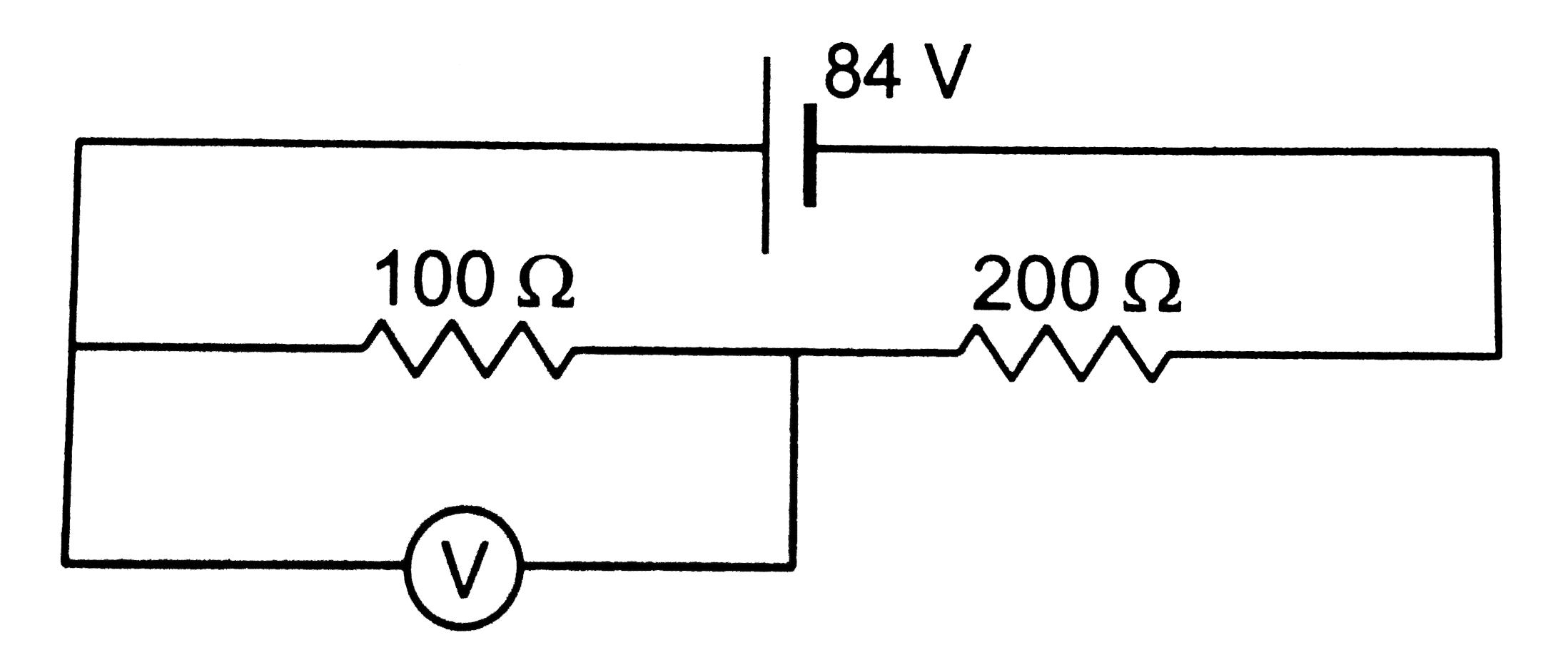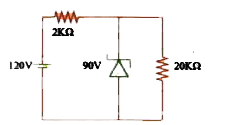Consider the circuit shown in figure.Find (a) the current in the circuit, (b) the potential drop across the (5Ω)resistor,(c )the potential drop across the 10(Ω)resistor.(d)Answer the parts (a),(b)and (c )with reference to figure.
 Solution in Gujrati
Solution in Gujrati
(a) Applying Kirchoff's law,
⇒10i−6+5i−12=0
⇒10i+5i=18
⇒15i=18
i=18/15 =6/5 =1.2A<br>(b)Potentialdropacross5 Omega register,<br> i5 = 1.2 xx 5V = 6V <br>(c)Potentialdropacross10Ωregister,<br> i10 = 1.2 xx 10V = 12 V <br> (d) 10i + 5i - 6 - 12 = 0 <br> rArr 15i =18 <br> rArr i= 1.2 <br> Potential drop across 5Ω register
= 6V
Potential drop across 10Ω register
= 12V .
Topper's Solved these Questions
- ELECTRIC CURRENT IN CONDUCTORSBOOK - HC VERMACHAPTER - ELECTRIC CURRENT IN CONDUCTORSEXERCISE - Objective 2
9 Videos
- DISPERSION AND SPECTRABOOK - HC VERMACHAPTER - DISPERSION AND SPECTRAEXERCISE - Exercises
11 Videos
- ELECTRIC CURRENT THROUGH GASESBOOK - HC VERMACHAPTER - ELECTRIC CURRENT THROUGH GASESEXERCISE - Exercises
23 Videos
Similar Questions
Electrons are emitted by a hot filament and are accelerated by an electric field as shown in figure .The two stops at the left ensure that the electron beam has a uniform cross-section.

View SolutionA flint glass prism and a crown glass prism are to be combined in such a way that the deviation of the mean ray is zero. The refractive index of flint and crown glasses for the mean ray are 1.620 and 1.518 respectively. If the refracting angle of the flint prism is 6.0∘, what would be the refracting angle of the crown prism ?
View SolutionA discharge tube contains helium at a low pressure. A large potential difference is applied across the tube. Consider a helium atom that has just been ionized due to the detachment of an atomic electron. Find the ratio of the distance travelled by the free electron to that by the positive ion in a short time dt after the ionization.
View Solution(a)find the potential drops across the two resistors shown in figure. (b) A voltmeter of resistance (600Ω)is used to measure the potential drop across the (300Ω) resistor.What will be the measured potential drop?

View SolutionConsider the circuit shown in figure.Find the current through the10(Ω)resistor when the switch S is (a)open (b)closed .

View SolutionConsider the circuit shown in figure.Find (a) the current in the circuit, (b) the potential drop across the (5Ω)resistor,(c )the potential drop across the 10(Ω)resistor.(d)Answer the parts (a),(b)and (c )with reference to figure.

View SolutionA voltmeter of resistances 400(Ω)is used to measure the potential difference across the 100(Ω)resistor in the circuit shown in figure.(a) What will be the reading of the voltmeter ?(b) What was the potential difference across 100(Ω)before the voltmeter was connected ?

View SolutionThe potential drop across the 3Ω resistor is

View SolutionIn the figure shown the potential drop across the series resistor is
View SolutionIn the circuit shown below: The potential difference across the 3 Omega resistor is:
View SolutionIn the figure shown the potential drop across the series resistor is

View SolutionThree resistors of 10 Ω, 15 Ω and 20 Ω are connected in series in a circuit. If the potential drop across the 15 Ω resistor is 3 V, find the current in the circuit and potential drop across the 10 Ω resistor.
View Solution(a)find the potential drops across the two resistors shown in figure. (b) A voltmeter of resistance (600Ω)is used to measure the potential drop across the (300Ω) resistor.What will be the measured potential drop?

View SolutionConsider the circuit shown in figure.Find the current through the10(Ω)resistor when the switch S is (a)open (b)closed .

View SolutionConsider the circuit shown in figure.Find (a) the current in the circuit, (b) the potential drop across the (5Ω)resistor,(c )the potential drop across the 10(Ω)resistor.(d)Answer the parts (a),(b)and (c )with reference to figure.

View SolutionThe potential drop across the 3 Omega resistor is
View Solution
